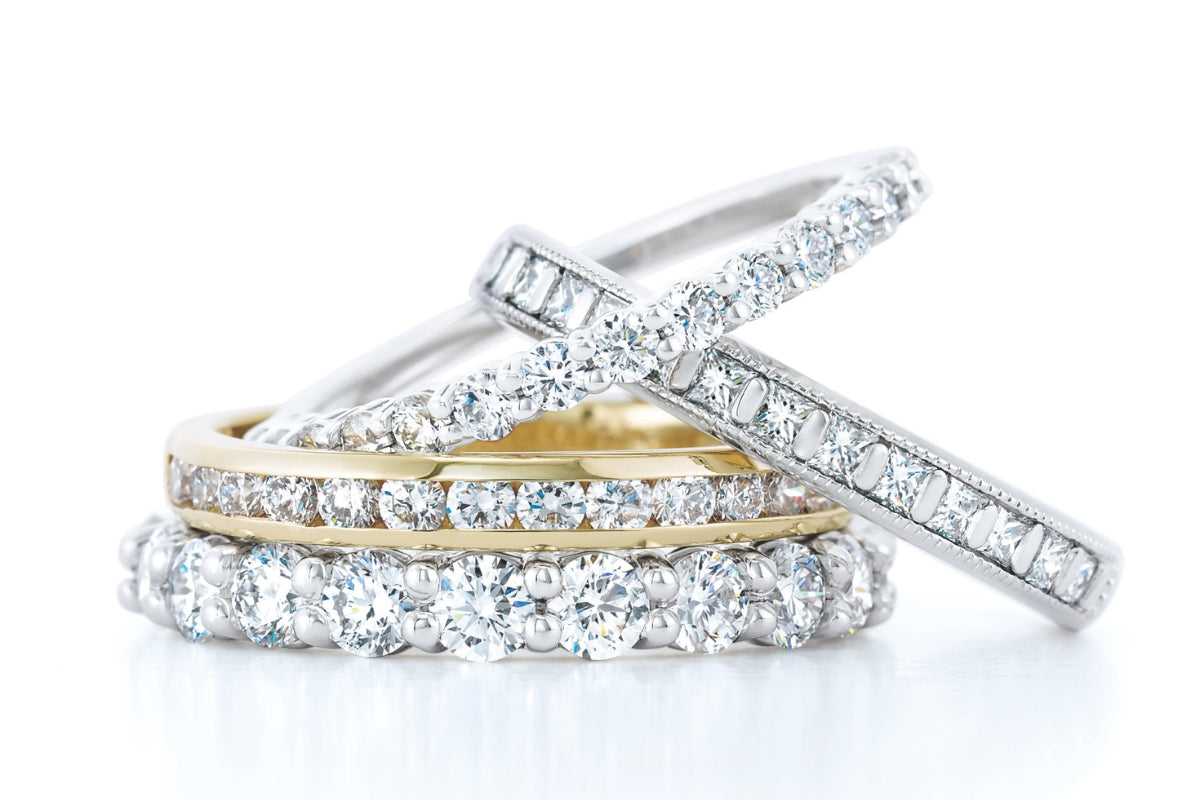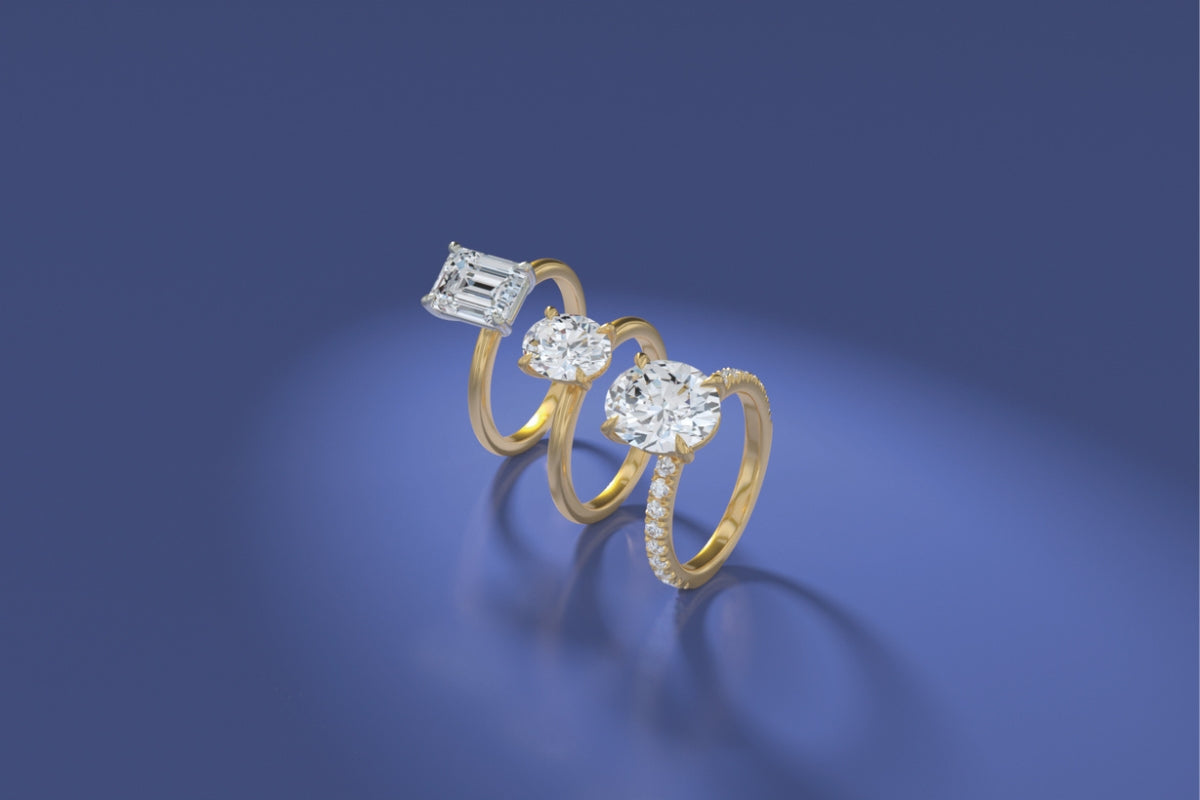Shopping for your next engagement ring, wedding band, or other fine jewelry is exciting, but with so many considerations and options these days it’s important to take the time to familiarize yourself with the precious metal choices you have available to you. Why? Because precious metals are adorned with diamonds and gemstones and provide not only the first impression in terms of the fine jewelry’s overall color, but even more importantly, it will hold and protect the diamonds and gemstones while being worn or displayed.
As you’ve probably noticed by now, there’s never been more precious metal types, qualities, colors and options available to accommodate various lifestyles, design preferences, potential allergies, and budgets. In this blog post, we’re going to dive deep into one particular precious metal which should be appreciated more and is often not considered enough: platinum.
As we discuss platinum and make reference to other precious metals, rest assured that all Soha Diamond Co. precious metals including platinum, palladium, gold, and silver are all 100% certified recycled.
Your first experience hearing the word “platinum” may evoke emotions of high quality or high cost, many times denoting various top-of-the-line vacation packages or vehicle trim levels. All of which should seemingly provide the best version of whichever product or service it’s intending to describe. As you’ve noticed throughout pop-culture, the word “platinum” has become synonymous with costing more due to providing the highest perceived value. As we uncover the various aspects of platinum and how and why it’s come to be known as the most noble of all precious metals, you’ll soon realize that it is a regal precious metal that is in fact seriously worth considering for your next engagement ring or wedding band.
First, let’s start off by understanding that Platinum and all of its glory is a recent discovery in comparison to other precious metals. Therefore, in some sense, platinum can be considered the most modern of all precious metal discoveries and therefore the last frontier when compared to other precious metals on planet Earth. In fact, according to the Gemological Institute of America (GIA), “Europeans learned of Platinum when the Spanish discovered it during their occupation of Ecuador in the late sixteenth century.” Not many know this, but due to its rarity, difficulty of extraction, and workability, …”it took two more centuries for European scientists to learn how to work with this mysterious metal.”
The side-by-side difference of white precious metals like silver, white gold, and platinum aren’t easy to tell visually, but when held in the palm of your hand, you can certainly experience platinum’s heft and substantial presence.
You may not come across platinum often, as it is not commonly or readily available in pre-made stock, inventory, or ready-to-ship jewelry pieces at many jewelry stores. Also, platinum has a very high melting point and creates challenges for jewelry manufacturers. National jewelry brands like to lower the barriers to making a sale, so selling a metal that takes additional education and resources at a higher cost isn’t something they’re willing to do.
Platinum does come at a price premium though when compared directly with a comparable 14K or 18K white gold counterpart. The increase in price does vary and is based on how much precious metal the actual piece of jewelry calls for. The price premium is due to the price of platinum costing more and its higher density compared to other precious metals. You may find that jewelry stores have different price premiums for the use of platinum. Generally, we advise our clients that are considering an upgrade from 18K white gold to platinum to expect a several hundred dollar increase in the price of the considered piece of jewelry.
Another benefit of platinum that doesn’t get enough recognition is that it is hypoallergenic! This means that if you know you’re allergic to nickel, copper, or various other trace amounts of alloys that are in traditional gold and silver jewelry pieces, then platinum should certainly be on your radar when considering your next precious metal fine jewelry piece.
Like most heirloom quality things in life, how things “wear” is an important consideration. The “wear” of platinum is really unique in that over time, the “luster” of a high polish platinum piece of jewelry will “patina.” You can expect the luster to gradually change over time. The character is similar to how fine leather ages in that the platinum’s appearance will become softer in terms of shine and richer in terms of color.

Metal Memory is a way to describe a characteristic of metals that return to their previous shape. So, if a metal has “metal memory,” it’ll tend to return toward its previous form or shape. When comparing platinum to gold and silver, platinum has the least metal memory. This means that it’s a hard metal that can be bent into various forms, but once it’s bent into place to secure diamonds and gemstones, it has an exceptional rigidity. Meaning, it won’t return to its prior state and will stay confidently in place as intended. For this reason, platinum is the choice of royalty and was even chosen to secure the Hope Diamond currently on exhibit at the Smithsonian Museum. Comparably, silver and gold havemore metal memory than platinum, meaning they’re more likely to return to their previous shape. Also, alloying these other precious metals can affect their respective metal memory.
Platinum is one of the strongest and most durable of all precious metals. The melting point is so high that only highly trained and experienced bench jewelers with only the most advanced torches can work platinum due to the approximately 3224°F melting point.
Platinum is known to have superior “strength” in comparison to other precious metals. Like many other metals, including silver and gold, platinum can be scuffed and show signs of normal wear and tear. One of the best ways to fully understand the magnitude of platinum’s strength is to consider the fact that when the surface of platinum becomes marked, nicked, scuffed, or even scraped, it’s quite literally “pushing” the metal apart from itself as opposed to rubbing off and transferring metal to another surface. This means that a bench jeweler can polish a blemished piece of platinum jewelry back to its original finish with little to no actual loss in weight. All of the above further prove the benefits of platinum prongs which due to its strength, make a great addition to an engagement ring and wedding bands as the prongs require less maintenance and protect the center diamonds and accent diamonds in the best possible way.
Platinum is the most dense out of all the precious metals used in fine jewelry. According to the Gemological Institute of America (GIA): “A mere six-inch (15.24 cm) cube of platinum weighs 169 pounds (76.66 kg)—about as much as a grown man.”
An experienced jeweler considers the “heft” of a precious metal by delicately tossing the weight of the finished piece of platinum jewelry into the palm of their hand, accessing the density associated with the precious metal. Historically, density denotes intention, quality, and craftsmanship. Platinum is considered more dense than silver or gold, which means that all else equal, you could make a piece of jewelry a bit more “delicate”, minimalist, and thinner looking while retaining its integrity for future use. This density is caused by the arrangement and types of atoms contained within platinum.
Benefits of 950 Platinum Group Metal (PGM)
- Platinum contains no nickel
- Hypoallergenic
- Lead-free
- Strong alloy that will not tarnish
- Requires no plating
- Premium bright white color that lasts
- It will never lose metal weight when polished
So, next time you’re shopping for fine jewelry or considering a custom piece, you’ll know a bit more about platinum, what makes it worth your consideration, and how it compares to other precious metal choices.




